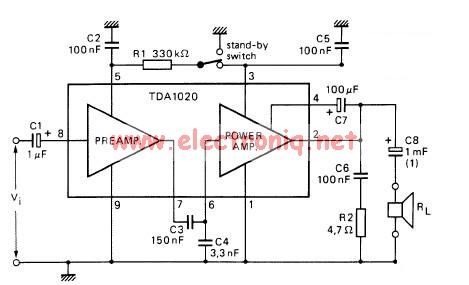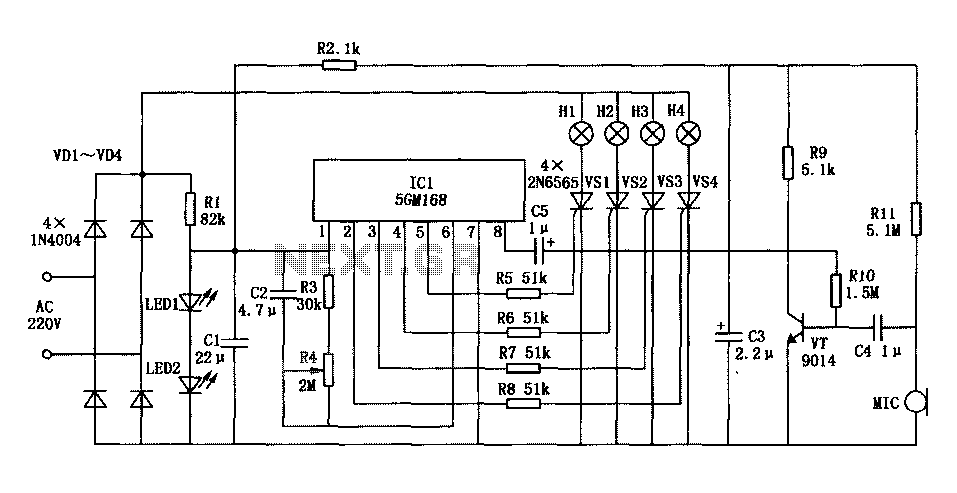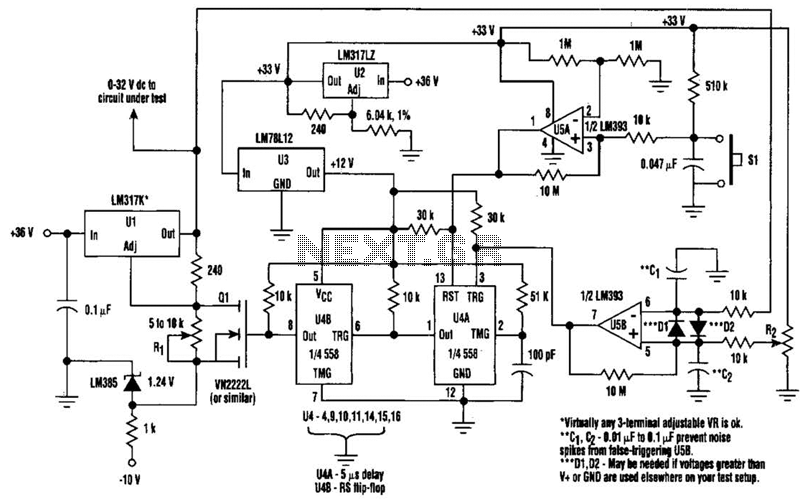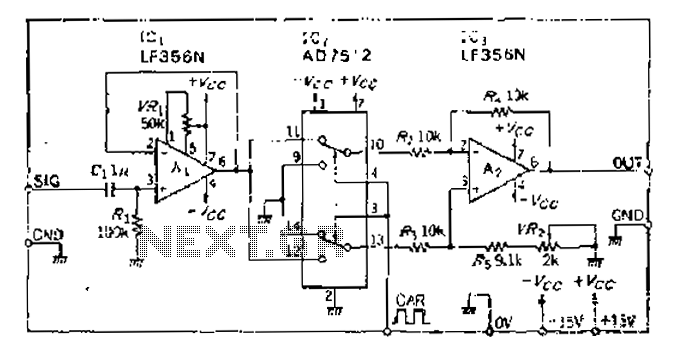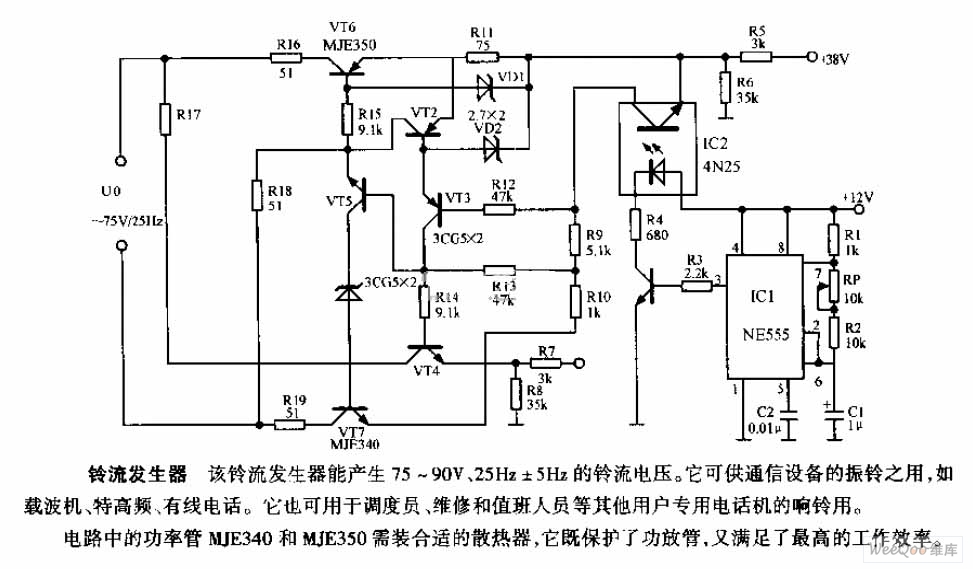
F84 Programmer circuit
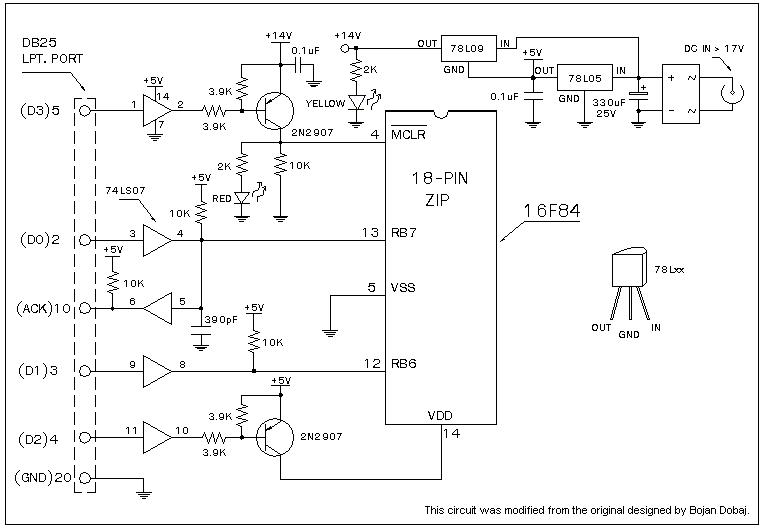
A universal Windows-based software designed to work with any serial programmers for the PIC16F84, known as WPicProg16 V1.20. It is recommended to build this programmer before starting various interesting projects with the F84. Some PIC programmers support in-circuit programming, while others can handle multiple PIC chips, including EEPROM. The F84-Programmer is adequate for beginners due to its simplicity and low cost. Figure 1 illustrates the circuit diagram of the F84-Programmer, which connects to the printer port LPT1. The Vdd is controlled by D2 with an inverted setting; a logic '0' at this pin activates the 2N2907 transistor, applying +5V to pin 14. Similarly, D3 controls the 2N2907 for Vpp with an inverted setting, supplying approximately +14V to the MCLR pin. The programming voltage Vpp is generated by raising the GND pin of the 78L09 to +5V, as depicted. Data read and write operations utilize RB7, with D0 transmitting serial packets while ACK reads back during verification. D1 serves as the clock output, synchronizing the programming flow. The DC input should be approximately 17V. The WPIC16.ZIP file contains the updated Windows version software for the F84-Programmer, created by Nigel Goodwin. The latest version of WPIC16.ZIP can be downloaded directly from Nigel's homepage. A button in the hardware settings allows for manual setting or clearing of the desired bit for hardware checks. WPicPro16 can also be easily invoked by the PIC C Compiler via command line settings. The hex file generated after compilation is downloaded to buffer memory, and writing the hex code from the buffer to the chip can be performed automatically by pressing WRITE PIC.
The F84-Programmer circuit is designed for ease of use and affordability, making it an ideal choice for beginners in microcontroller programming. The connection to the LPT1 printer port facilitates communication between the programmer and the PC, allowing for straightforward programming of the PIC16F84 microcontroller. The circuit diagram, referenced as Figure 1, provides a visual representation of the connections and components involved.
The use of the 2N2907 transistor is critical for controlling the power supply to the microcontroller, ensuring that the correct voltage levels are applied during programming. The inverted logic configuration allows for effective control of both Vdd and Vpp, which are essential for the proper operation of the PIC16F84 during programming sessions. The programming voltage, Vpp, is particularly important as it must reach approximately +14V to enable the microcontroller's programming mode.
Data transmission and verification are handled through specific pins on the PIC, with RB7 designated for data read and write operations. The clock signal, provided by D1, ensures that the data is synchronized correctly during programming, which is vital for maintaining data integrity.
The WPIC16.ZIP software package enhances the functionality of the F84-Programmer, allowing users to compile their code with the PIC C Compiler and seamlessly transfer the resulting hex file to the microcontroller. This integration simplifies the development process, enabling users to focus on their projects rather than the complexities of programming interfaces. The manual control feature provided by the hardware settings button allows for troubleshooting and verification of the programmer's functionality, ensuring reliability in various programming scenarios.
Overall, the F84-Programmer is a robust solution for those looking to delve into microcontroller programming, providing essential features and ease of use for both novices and experienced users alike.A very nice universal window based software designed to work with any serial programmers for PIC16F84, i. e. , WPicProg16 V1. 20. Build this programmer before start constructing the coming many interesting F84 projects. Some PIC programmers can be used for in circuit programing, some provide many PIC chips including eeprom, say.
Why so many The F84-Programmer is enough for beginners. It`s so simple and cheap. Figure 1 shows a circuit diagram of the F84-Programmer. The programmer connects some bits shown in the figure through printer port LPT1, say. Vdd is controlled by D2 with invert setting, logic `0` at this pin turns 2N2907 on applying +5V to pin14. Similarly for Vpp with invert setting, D3 controls 2N2907, gating approx. +14V to MCLR pin. A programming voltage Vpp is derived by lifting GND pin of the 78L09 to +5V as shown. Data read and write use RB7, D0 sends serial packet while ACK reads back during verify. D1 is clock output synchronizing programming flow. DC input should be approx. 17V. WPIC16. ZIP Updated zip format of window version software for F84-Programmer written by Nigel Goodwin. The Latest WPIC16. ZIP may get directly from Nigel`s Homepage. The button shown in the hardware settings can be used to set or clear the desired bit manually for checking hardware.
WPicPro16 is also easily invoked by PIC C Compiler via command line setting. Hex file generated after compiling will then be downloaded to buffer memory. To write the hex code in buffer to the chip may done automatically by pressing WRITE PIC, that all. Have fun. 🔗 External reference
The F84-Programmer circuit is designed for ease of use and affordability, making it an ideal choice for beginners in microcontroller programming. The connection to the LPT1 printer port facilitates communication between the programmer and the PC, allowing for straightforward programming of the PIC16F84 microcontroller. The circuit diagram, referenced as Figure 1, provides a visual representation of the connections and components involved.
The use of the 2N2907 transistor is critical for controlling the power supply to the microcontroller, ensuring that the correct voltage levels are applied during programming. The inverted logic configuration allows for effective control of both Vdd and Vpp, which are essential for the proper operation of the PIC16F84 during programming sessions. The programming voltage, Vpp, is particularly important as it must reach approximately +14V to enable the microcontroller's programming mode.
Data transmission and verification are handled through specific pins on the PIC, with RB7 designated for data read and write operations. The clock signal, provided by D1, ensures that the data is synchronized correctly during programming, which is vital for maintaining data integrity.
The WPIC16.ZIP software package enhances the functionality of the F84-Programmer, allowing users to compile their code with the PIC C Compiler and seamlessly transfer the resulting hex file to the microcontroller. This integration simplifies the development process, enabling users to focus on their projects rather than the complexities of programming interfaces. The manual control feature provided by the hardware settings button allows for troubleshooting and verification of the programmer's functionality, ensuring reliability in various programming scenarios.
Overall, the F84-Programmer is a robust solution for those looking to delve into microcontroller programming, providing essential features and ease of use for both novices and experienced users alike.A very nice universal window based software designed to work with any serial programmers for PIC16F84, i. e. , WPicProg16 V1. 20. Build this programmer before start constructing the coming many interesting F84 projects. Some PIC programmers can be used for in circuit programing, some provide many PIC chips including eeprom, say.
Why so many The F84-Programmer is enough for beginners. It`s so simple and cheap. Figure 1 shows a circuit diagram of the F84-Programmer. The programmer connects some bits shown in the figure through printer port LPT1, say. Vdd is controlled by D2 with invert setting, logic `0` at this pin turns 2N2907 on applying +5V to pin14. Similarly for Vpp with invert setting, D3 controls 2N2907, gating approx. +14V to MCLR pin. A programming voltage Vpp is derived by lifting GND pin of the 78L09 to +5V as shown. Data read and write use RB7, D0 sends serial packet while ACK reads back during verify. D1 is clock output synchronizing programming flow. DC input should be approx. 17V. WPIC16. ZIP Updated zip format of window version software for F84-Programmer written by Nigel Goodwin. The Latest WPIC16. ZIP may get directly from Nigel`s Homepage. The button shown in the hardware settings can be used to set or clear the desired bit manually for checking hardware.
WPicPro16 is also easily invoked by PIC C Compiler via command line setting. Hex file generated after compiling will then be downloaded to buffer memory. To write the hex code in buffer to the chip may done automatically by pressing WRITE PIC, that all. Have fun. 🔗 External reference
Warning: include(partials/cookie-banner.php): Failed to open stream: Permission denied in /var/www/html/nextgr/view-circuit.php on line 713
Warning: include(): Failed opening 'partials/cookie-banner.php' for inclusion (include_path='.:/usr/share/php') in /var/www/html/nextgr/view-circuit.php on line 713
